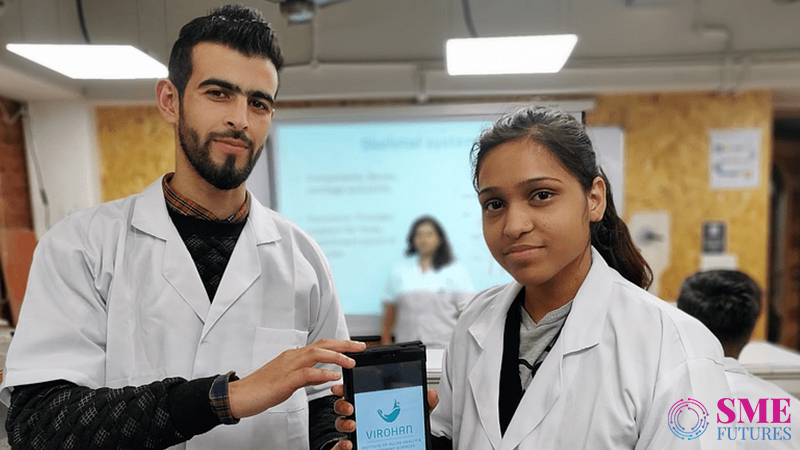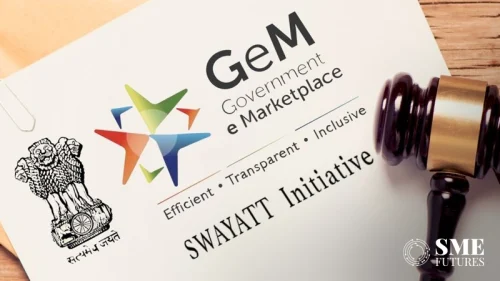The COVID-19 pandemic has brought to the fore many issues and problems that were either not taken seriously earlier or completely ignored. One such problem is the dearth of healthcare professionals such as doctors, nurses, and allied health workers in the country.
In the current fraught situation, India is facing great difficulties due to this huge demand and supply gap for healthcare personnel. And no matter how many healthcare personnel, paramedics, and doctors are on the job right now, this gap is showing no signs of narrowing any time soon.
The situation has exposed the inherent flaws in the Indian healthcare ecosystem—we require an army of healthcare experts, especially paramedics, also called allied healthcare professionals. It’s not just because of the virus; the truth is that the country has always faced this problem.
Let us break down the problem for a better understanding of what we are talking about.
Usually, healthcare professionals in India are divided into three broad categories: doctors (ten to fifteen per cent of the healthcare workforce), nurses (twenty to twenty-five per cent of the healthcare workforce) and paramedics (allied health care professionals or healthcare technicians), which is the largest group within the healthcare workforce.
When it comes to their numbers, they are on the lower side, as has become obvious due to the current scenario unfolding in front of all of us. Simultaneously, perusing and comparing the data yields a clear picture about the critical need for paramedics in this country. Just look at the numbers.
In India, the doctor-to-allied health care professional ratio is 1:4. In advanced countries such as the United States or the United Kingdom, the ratio is 1:20. Today, India has over 10 million allied health care professionals working in the sector, but in order to match this 1:20 ratio, we need this number to increase from 10 million to 40-50 million in the next few years to at least match the global standards, where paramedics are the first line of defence in case of any medical emergency.
Here are certain facts which clarify the reasons behind the shortage of paramedics in the country. First of all, there was no centralised body to certify them until the National Skill Development Corporation (NSDC) came into existence. Prior to NSDC, each state used to certify them at their own level. In fact, only less than 7 per cent of these allied healthcare professionals are certified in India which means that around 90 per cent of AHPs are not trained formally.
This is the problem that Virohan, a Gurgaon-based healthcare ed-tech firm, is trying to solve.
With its blended learning technology platform, the company offers NSDC certified diplomas and delivers vocational training to students who want to become allied healthcare practitioners, who are in high demand in this country right now.
Due to the massive shortage of trained AHP staff in medical institutions and organisations, Virohan is witnessing greater traction. In fact, despite the pandemic, the firm saw a significant 130 per cent increase in student enrolments from ~1,100 students per year to ~2,600 students for the fiscal year which ended in March 2021.
“We have trained over 5,500 students so far,” says Kunaal Dudeja, Co-founder & CEO at Virohan.
According to him, the company analytics indicate that there has been a significant jump in enrolments. Wherein, female enrolments have markedly risen, “We also saw an increase in the proportion of female enrolments, which increased from 20 to 48 per cent,” he further informs us.
They aim to fill the gap
The main aim behind establishing Virohan was to bridge the demand supply gap for AHPs which the Indian healthcare industry is currently facing.
The biggest problem today is that for quality health care services, allied healthcare professionals are actually the most important because if there are a hundred interactions with a patient in a hospital, 80 of these are with allied healthcare professionals, and the biggest challenge in India is that less than a third of these interactions are with allied healthcare professionals.
Commenting on this scenario, Dudeja says, “We need at least 50 million health care professionals to be working today in the healthcare system. But there are only less than 10 million working in the sector. Approximately 90 per cent of these 10 million are also currently untrained and uncertified.”
“So, the motive was to essentially bridge the market gap and become an organisation that provides quality training to make sure that the workforce is ready when they enter the industry,” he says.

At the same time, the start-up also aims to steer the education and training system in the right direction.
As per Virohan’s philosophy, the traditional education system in India is flawed on two fronts. Dudeja explains, “I believe, there are two large areas of failure. There’s training failure and there is scale failure. So, we started Virohan with an idea to convert and fix the training failure, fix the scale failure, to make the education system demand-driven, completely scalable, standardised and to make sure that the outcomes are standardised. So, people coming out of the training system are actually employable because of how they are being trained on our demand-driven training modules.”
As per Dudeja’s viewpoint, education in India needs to be demand-driven. Currently the education system follows the supply-driven model, which is completely disconnected from what the industry requires. Even the trainings that the AHPs are being given currently, follow an outdated format, he opines. According to him, the biggest challenges are the demand-supply gap, recognition for the certification, and transparency in the training process. “Which usually results in very poor outcomes in terms of pass percentages and high dropout rates,” he says.
“We overcame that challenge by using our pedagogy and product,” he asserts.
According to him, the education needs to be imparted from the perspective of the employer and on how these professionals are going to be working in the industry. “For that, we need to understand three things,” says Dudeja. “Technical training and the need for practical training and there’s also the need for training on soft skills and grooming. These trainings will make students industry ready when they enter the workforce and they will be able to fully contribute to the workforce in a productive manner,” he avers.
Virohan was hence incorporated in 2018 by Kunaal Dudeja along with Nalin Saluja (co-founder & CTO) and Archit Jayaswal (co-founder & CFO). The firm offers trainings in the form of five courses by using its end-to-end proprietary ‘technology skill stack’ to enable job prediction, aggregate training providers and standardise processes across the student journey from mobilisation to training content to placements.
Impact of COVID-19 on business
Like any other business dealing with the pandemic, Virohan too underwent several changes to ensure business continuity. Dudeja says that they changed the way in which they were conducting classes. Such as, when it comes to courses about the medical professions, it is imperative to inculcate practical knowledge. But due to the pandemic induced restrictive circumstances, the start-up had to adapt and change their methods accordingly.
Dudeja further elaborates, “We at Virohan mapped a shift from being a blended learning model of training to an omni-channel training model, that can seamlessly switch between in-class training to purely online at-home training without compromising on learning outcomes. While we still focus on the in-class learning as the interpersonal environment which allows us to curate activities that not only keep the students engaged for longer, but also develop their social and 21st century life skills, that they need to succeed in today’s service industry. But with constant improvements to our product, we are getting closer to achieving very similar learning outcomes online too.”
However, many a times even online learning has challenges of its own, such as internet connectivity, which is the one thing that students have to deal with on their own. “Students have limited data bandwidth per day and that puts a limitation on how much they can consume purely remotely,” he clarifies.
But despite the reshaping of the Indian industries, for edtech start-ups, the pandemic was an opportune time.
Similarly, for Virohan it was the right set of circumstances to leverage this opportunity in adversity. The company claims to have witnessed an uptick in its revenue and growth. Dudeja informs us, “We experienced over 250 per cent growth during the pandemic.”
In fact, the start-up’s growth spurt can be gauged from the fact that they recently secured series A funding of $3 million led by Rebright Partners. Dudeja tells us that the company will use this funding for expansion to over 160 new campuses pan India.
“The aim is to strengthen the Indian healthcare system by creating an army of a specially trained allied healthcare workforce. The funding will also help us augment our proprietary learning tech platform that includes on-demand online training through bite sized videos and real-time quizzes and gamification,” he reveals.
As part of the total fundraise, the Series A and seed rounds were raised from Rebright Partners, Elea Foundation for Ethics in Globalization, the Singh Family Trusts, advised by Artha Impact, Yunus Social Business, Better Capital and Keiretsu Forum.
Even as demand accelerates, many challenges still persist
Paramedics and allied healthcare workers are a critical part of the medical profession, and their contribution is more or less similar to what doctors provide. However, largely, their potential has not been harnessed in the right manner. Yet, another stark fact is that this group of medical professionals is unstructured and unregulated. But it seems like the government is taking care of this particular issue as it has recently passed the National Commission for Allied Healthcare Professionals Bill.
Meanwhile, the second wave of the coronavirus has engendered a huge spike in the demand for nurses, technicians and paramedics. As per industry sources, there has been around a 20 per cent increase in the salary for such jobs. Whereas there was a 40 per cent increase in the demand for home nurses during the March-April period.
This has given rise to some major opportunities for start-ups like Virohan.
But on the flip side, the industry’s main challenge has been to find good trainers, as this field is trainer driven. Finding good teachers and trainers can be daunting and retaining this talent is yet another challenge.
Which is precisely what this healthcare edtech start-up is working on.
Dudeja says, “There is a high demand for trainers and teachers and there will always be competition along with more salary offerings. So, in order to tackle this major challenge and maintain quality education, we have completely moved away from a trainer driven module to a facilitator driven pre-recorded delivery of training with real-time assessment in the classroom.”
Which has led to a decrease in dropout rates. “The change has led to less than 7 per cent drop hours compared to a 35 to 40 per cent dropout rate in the industry. Over a 90 per cent pass percentage as compared to less than 65 to 70 per cent dropouts in the industry. And over 95 per cent students on jobs at the end of the completion of the programmes, compared to less than 60 per cent if you look at the industry,” Dudeja informs us.
Having said that, the technology goal of Virohan is to develop a tech stack that standardises student experience in the professional training ecosystem.
“We are building various technology products that enable mass mobilisation using community influencers; a student financing platform; algorithm-based conversion optimisation; a blended learning delivery platform with real-time assessments; machine learning based job predictions; cryptographic hash functions-based authentication of student credentials and virtual reality simulations for practical training,” says the co-founder.
There will be more going ahead
Going ahead, Virohan with its unique concept, envisions itself becoming the industry leader in the paramedical education segment. Its mission is to provide a demand-driven and up-to-date curriculum. With series A funding in its kitty, the start-up has got the monetary encouragement to expand its operations.
Talking about their future roadmap, Dudeja says, “One of the key future plans for us is to make sure that this training is delivered all across India. Then eventually we want to expand outside India and go to Southeast Asia and the Middle East regions. The main reason for this is that India is one of the largest exporters of healthcare technicians in the world. When you look at the Middle Eastern market, you will realize that there is a vast potential for start-ups like us.”
By the end of 2025, the start-up eventually aims to educate and train around 1 million students and expand its operations to over 160 centres across 35+ cities in India.











